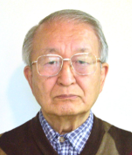Updated: 5 September 2024

Toru Nakagawa (OGU, WTSP Project Leader) "TRIZ Home Page in Japan":
http://www.osaka-gu.ac.jp/php/nakagawa/TRIZ/eTRIZ/
-----------------------------------------------
Subject:
"TRIZ Home Page in Japan" Updated (Sept. 5, 2024) Earthquake Prediction Research and Disaster Mitigation (EQP)
Hello, how are you, your family, and the people in your country? I hope you all are well.
In Japan, we have been experiencing an extraordinary summer, with high temperatures (35 to 40 degrees C),
torrential rainfalls, a super typhoon, and an earthquake.
In many regions over the globe, there is plenty of unhappy news caused by abnormal climate, some big earthquakes,
wars in Ukraine and Palestine, etc.
We pray for peace for all the people in the world.
As I wrote you earlier, I made up my mind to work (to support)
on the Short-term/Imminent Earthquake Prediction research.
I have started to contribute to EPSJ (Earthquake Prediction
Society of Japan), LinkedIn (especially in its "TRIZ and
Innovation" Group), Japan TRIZ Symposium, and ETRIA (European
TRIZ Association), etc.
All my contributions and activities are to be (re-)posted in my
website "TRIZ Home Page in Japan" :
https://www.osaka-gu.ac.jp/php/nakagawa/TRIZ/eTRIZ/
I newly uploaded the following two articles on Sept. 6.
[1] "Earthquake Prediction (EQP) Research Based on the TRIZ Philosophy:
(4) Tsutsui Method: Observing Underground DC Electric Field"
(Toru Nakagawa) (LinkedIn, Aug. 13, 2024)
This is the 4th part of my series of introductory articles
posted on LinkedIn since Apr. 2024 toward a wider audience
interested in TRIZ and innovation.
Minoru Tsutsui (Professor Emeritus of Kyoto Sangyo University)
observed variation in the DC electric field under the ground.
The figure attached below shows his equipment and observed data.
He set a DC dipole sensor (100 m long) in the borehole (150 m
deep) located at an island near the southern tip of Kii Peninsula,
He achieved a continuous record every second with low noise (0.05 μV/m).
Figure (b) is the data observed on 2021/5/1.
You see, over the the flat continuous noise, drastic (±)
variations (starting at 8:50, and lasting for 46 minutes), a pulse signal (at 10:27), and
drastic (±)variations (starting at 19:00, lasting for 68 minutes),
He later learned that there was an earthquake of M6.8 off
Miyagi (about 750 km away) at the time of 10:27.
The exact matching of the timing strongly suggests that
the signals detected here are the precursor, the quake,
and the "post-cursor" of the M6.8 earthquake.
This observation is epoch-making in many aspects, such as
the detection of an earthquake occurred far away, with
the precursor 1.5 hours beforehand (and the post-cursor
8-9 hours afterward), with high S/N ratio, with clear
and complex fine structures, and continuous data of
1-sec time resolution.
M. Tsutsui has been working alone with a single observation
site and has developed an excellent observation method.
By applying the method at multiple observation sites in
a collaborative research project of several research groups,
and by further deploying it at several tens of sites in the
country-wide network of a national research project,
the Tsutsui Method will play the role of the core technology
of the Short-term/Imminent Earthquake Prediction system.
Through such a development process, we will establish a method
to predict the impending earthquakes in terms of their 'where
when, and what size' in advance.
[2] "Short-term Earthquake Prediction Research
Based on the TRIZ Philosophy", (Toru Nakagawa)
(Presented at Japan TRIZ Symposium 2024, on Aug. 29, 2024)
This is a systematic presentation of my approach to
Earthquake Prediction Research.
Abstract and Presentation slides (21 slides) are posted
on the English page, while on the Japanese page
Slides with annotation (in HTML) and Presentation video (in mp4, 23.5 minutes)
are posted additionally.
The table of slide contents is attached here in a pdf file.
We sincerely hope for your understanding and support of our
approach to Earthquake Prediction Research.
Please contribute your comments, thoughts, etc.
I will post them in our EQP Forum on my website.
Let's work Together! Connected !!
Best wishes,
Toru
--------------------------
Toru Nakagawa, Dr., Professor Emeritus, Osaka Gakuin University
E-mail: This email address is being protected from spambots. You need JavaScript enabled to view it. [Main email address. For receiving.]
This email address is being protected from spambots. You need JavaScript enabled to view it. [For sending (& receiving)]
This email address is being protected from spambots. You need JavaScript enabled to view it. [For sending Update Announcements] Editor of the "TRIZ Home Page in Japan":
https://www.osaka-gu.ac.jp/php/nakagawa/TRIZ/eTRIZ/">URL:https://www.osaka-gu.ac.jp/php/nakagawa/TRIZ/eTRIZ/
Project Leader of World TRIZ-related Sites Project (WTSP) Director of CrePS Institute:
Publication of "TRIZ Practices and Benefits" book series (in Japanese)
3-1-13 Eirakudai, Kashiwa, Chiba 277-0086, Japan.
Phone & FAX: +81-4-7167-7403
------------------------------------------
